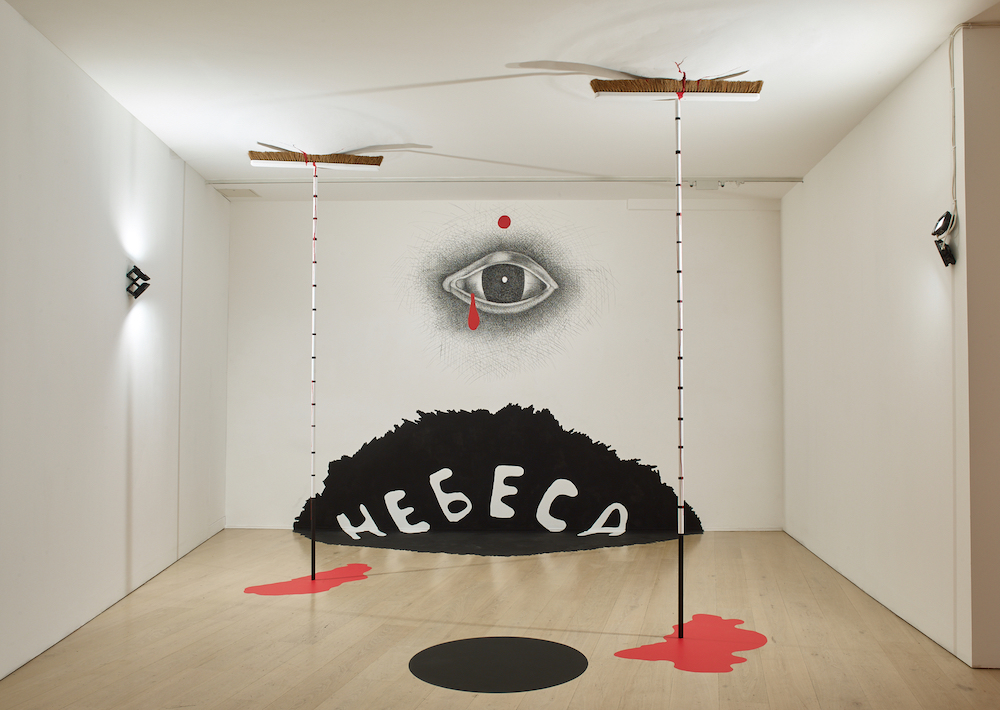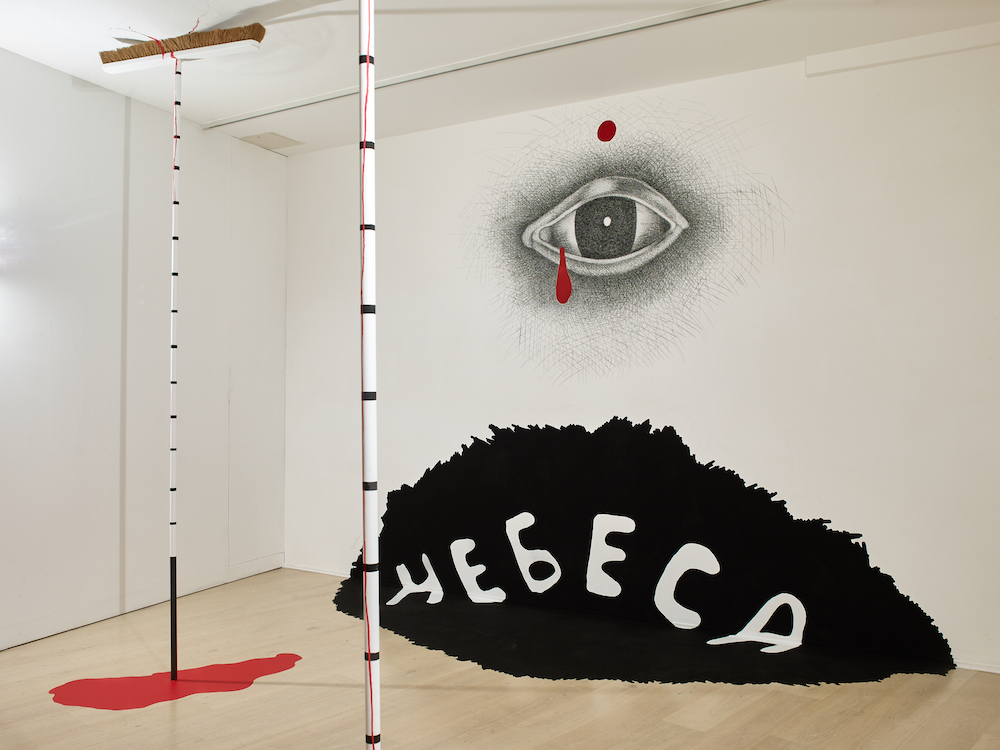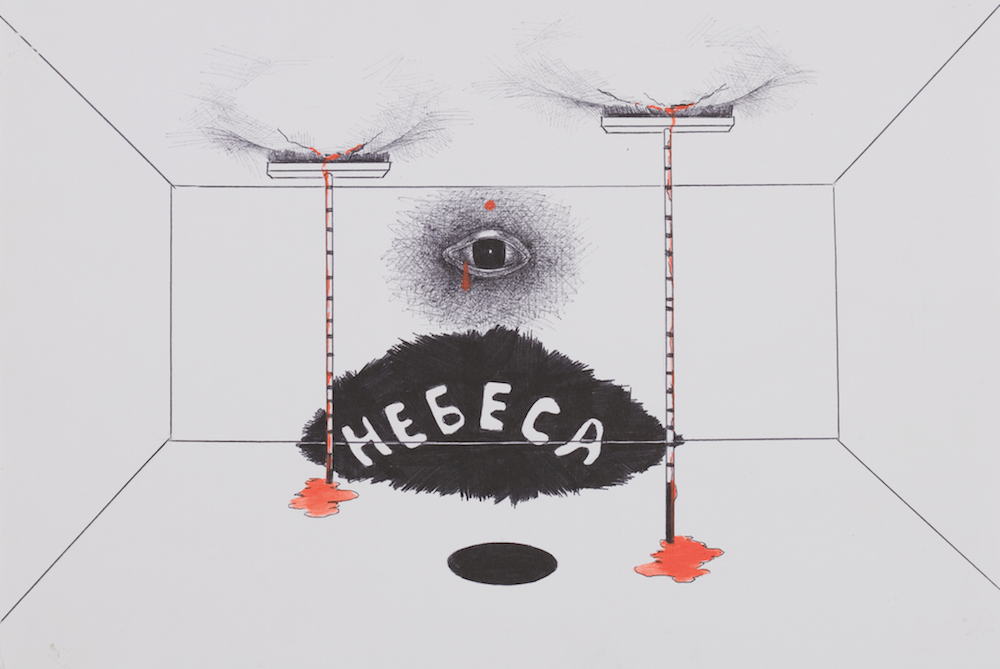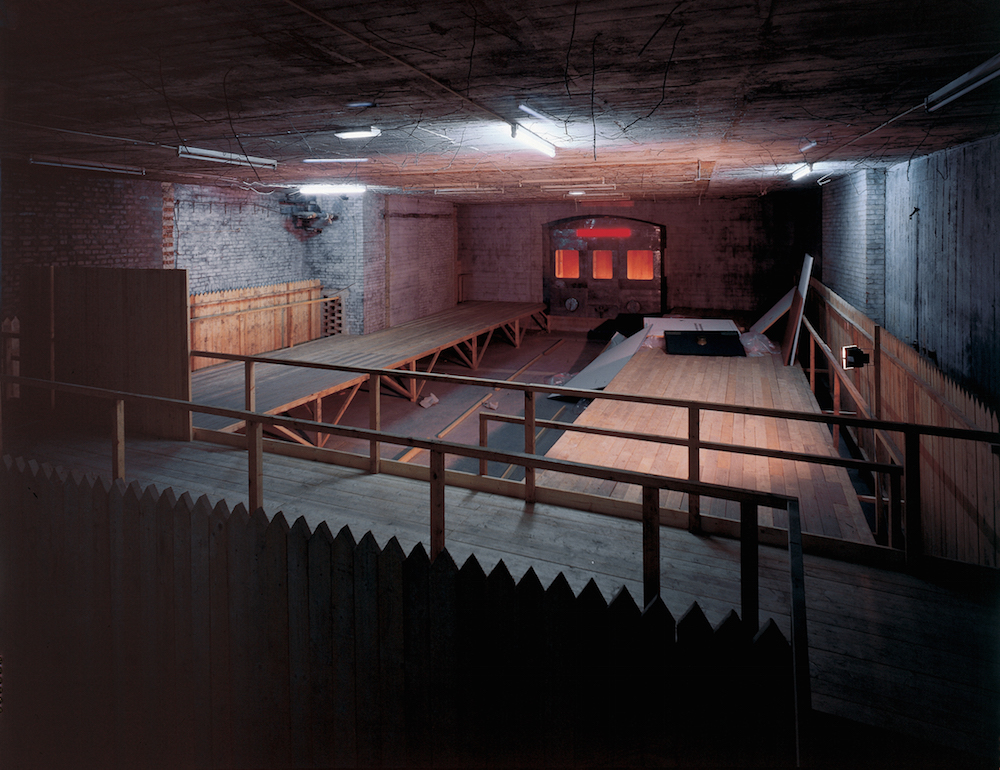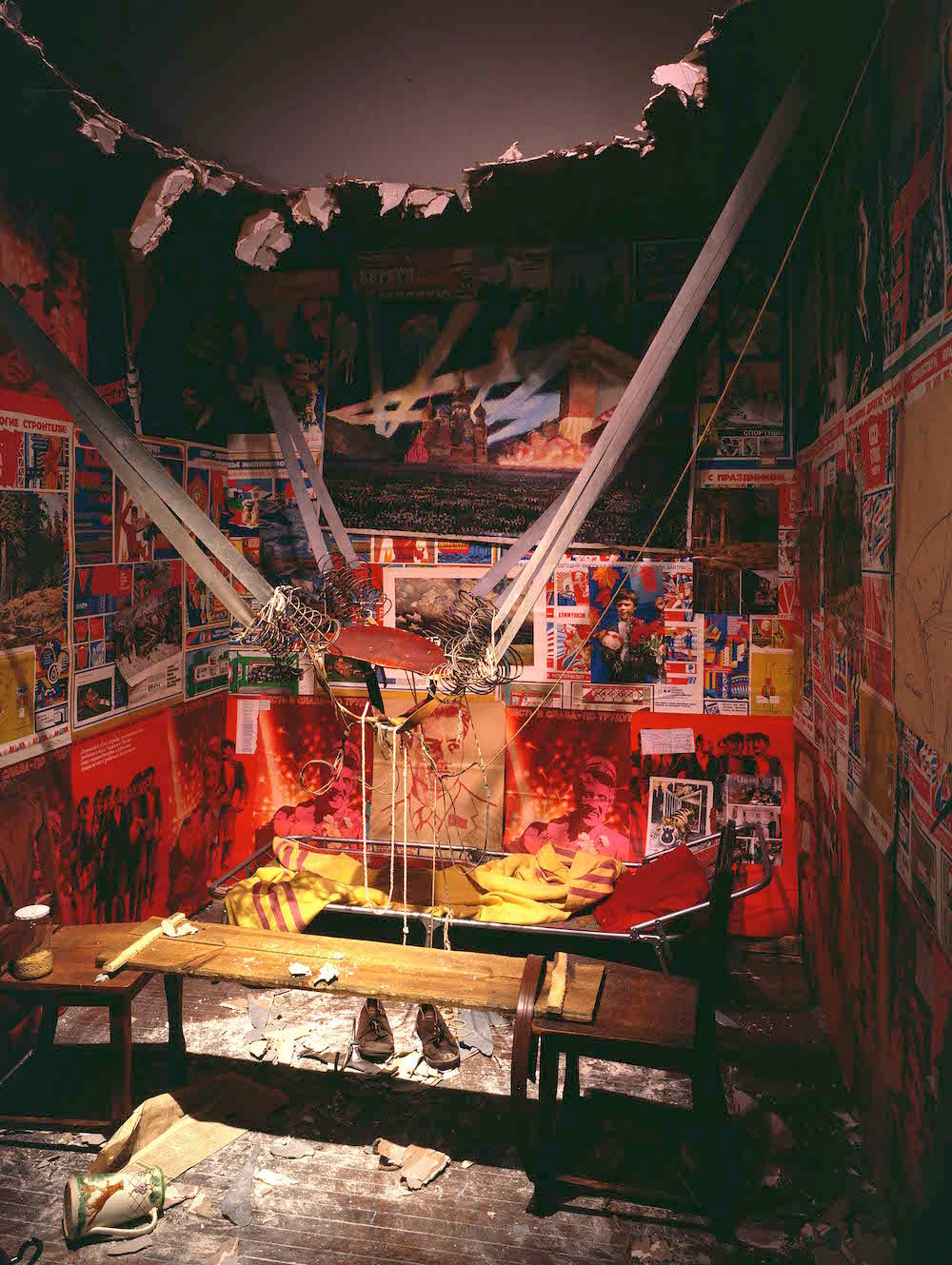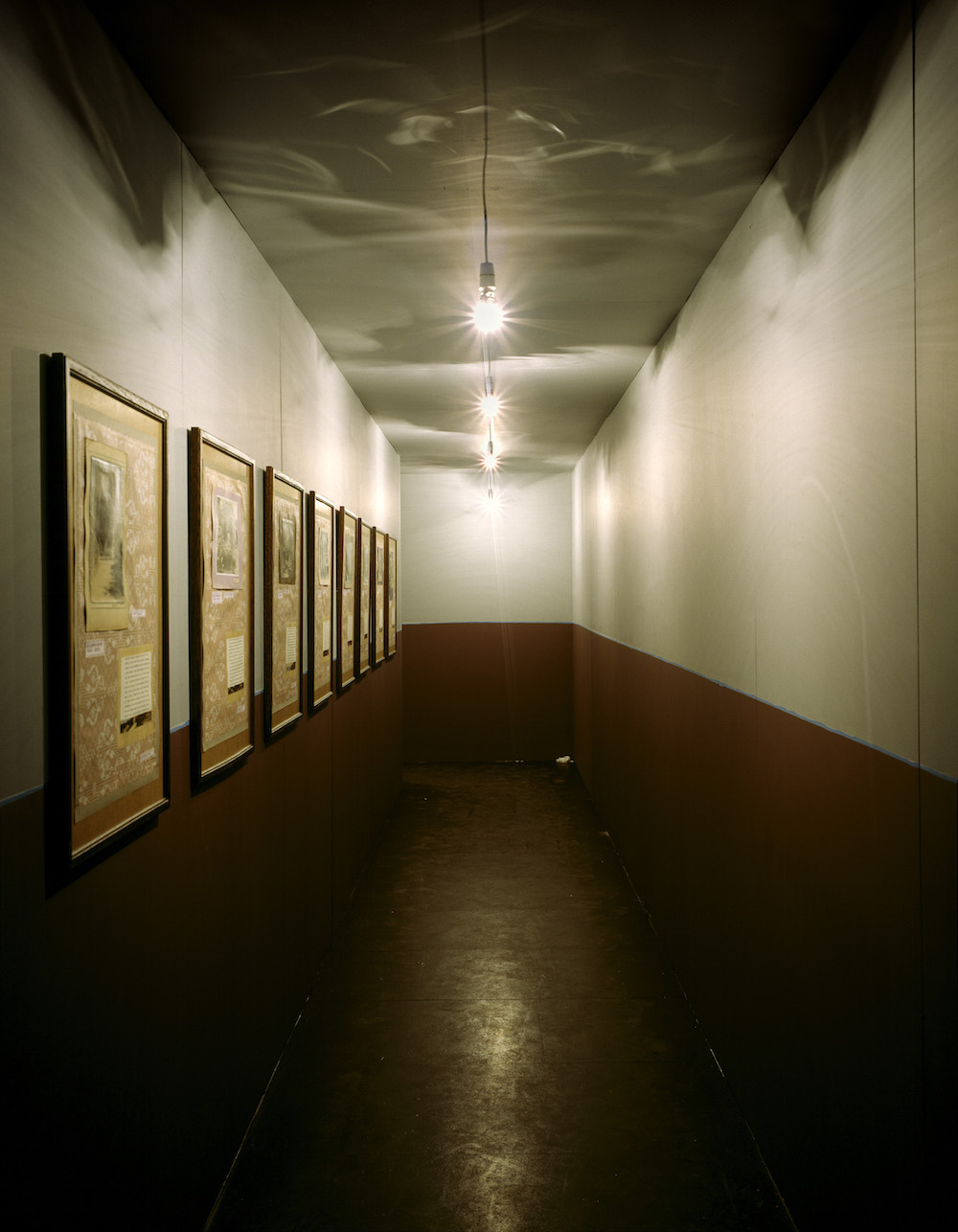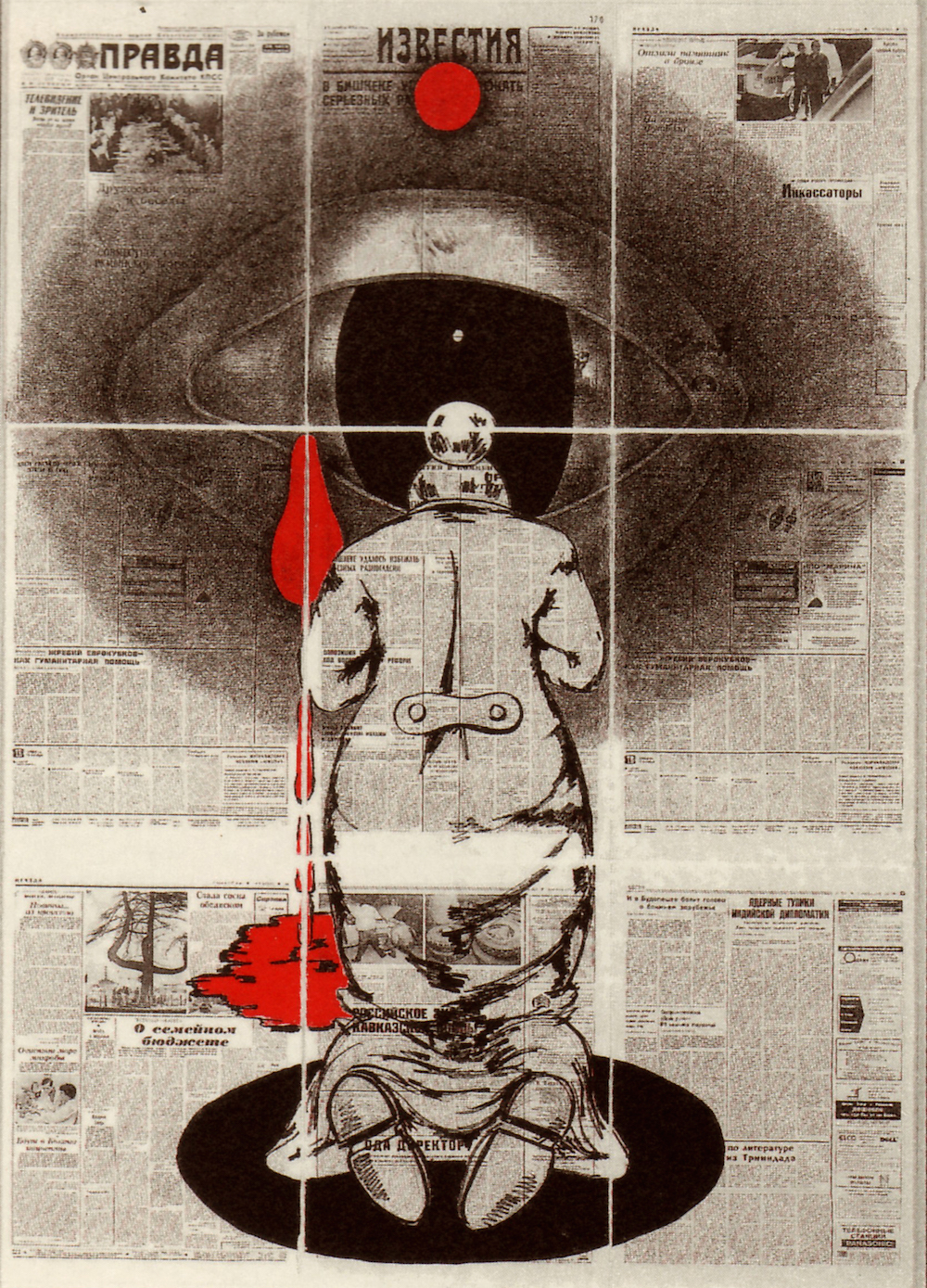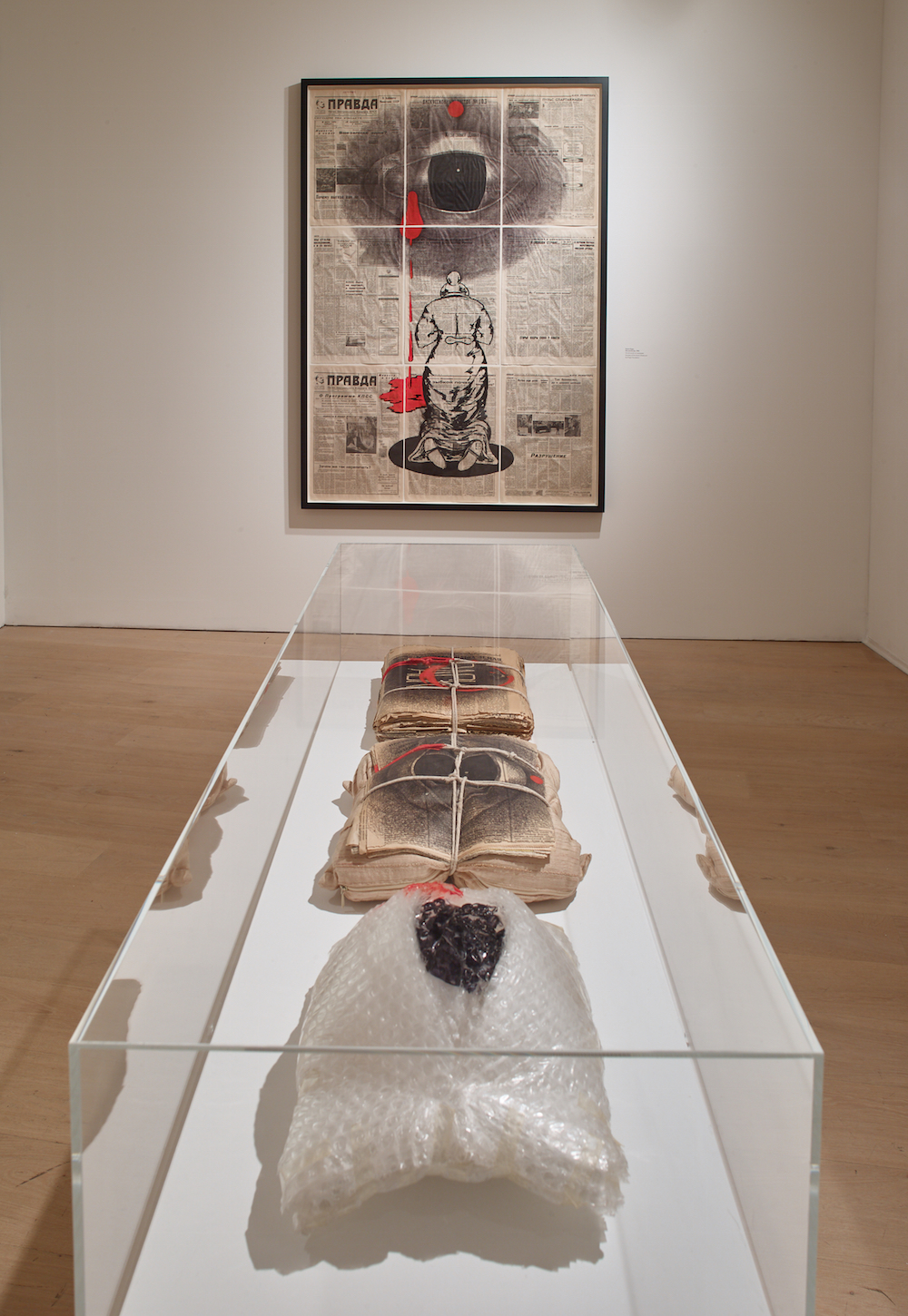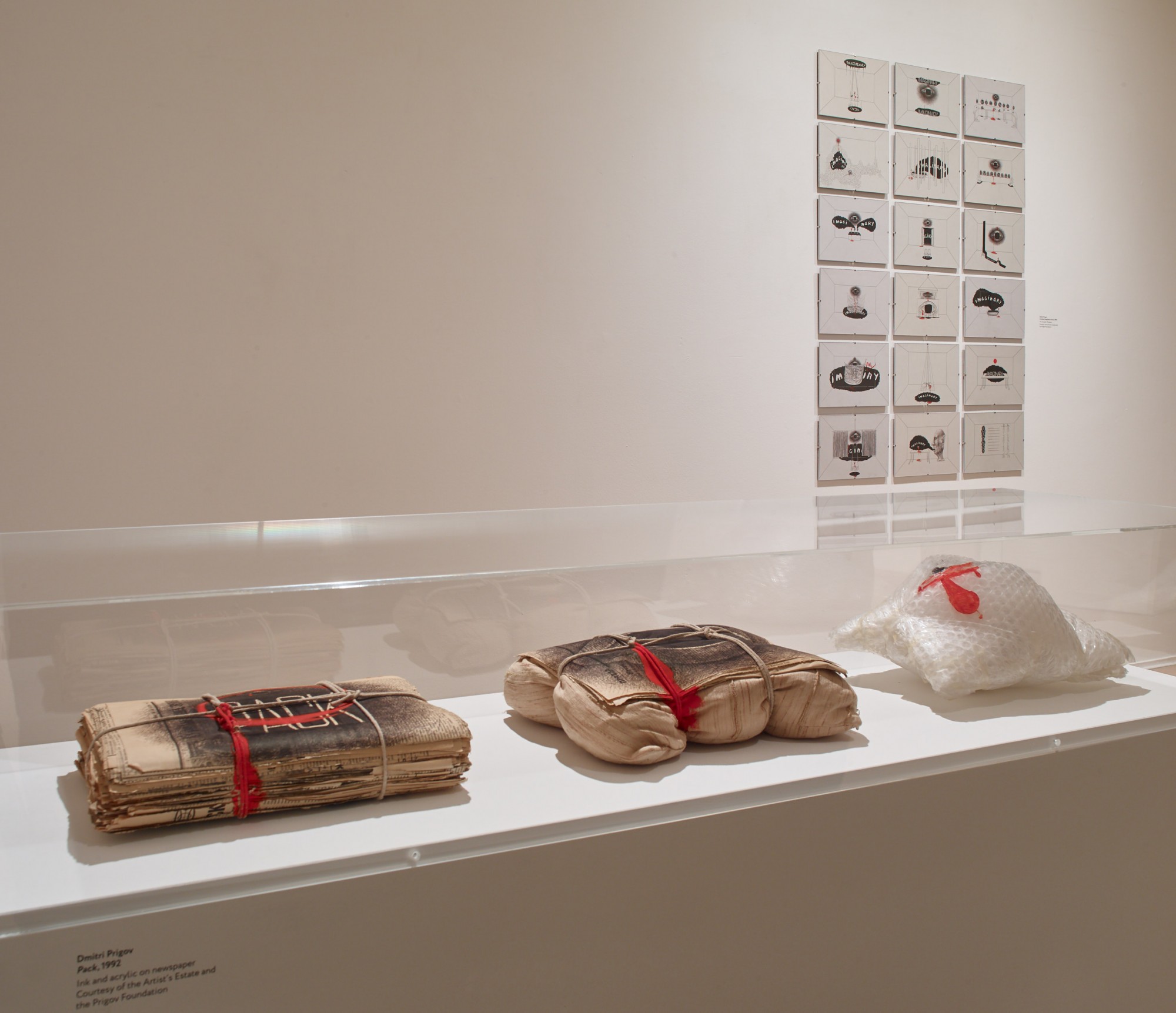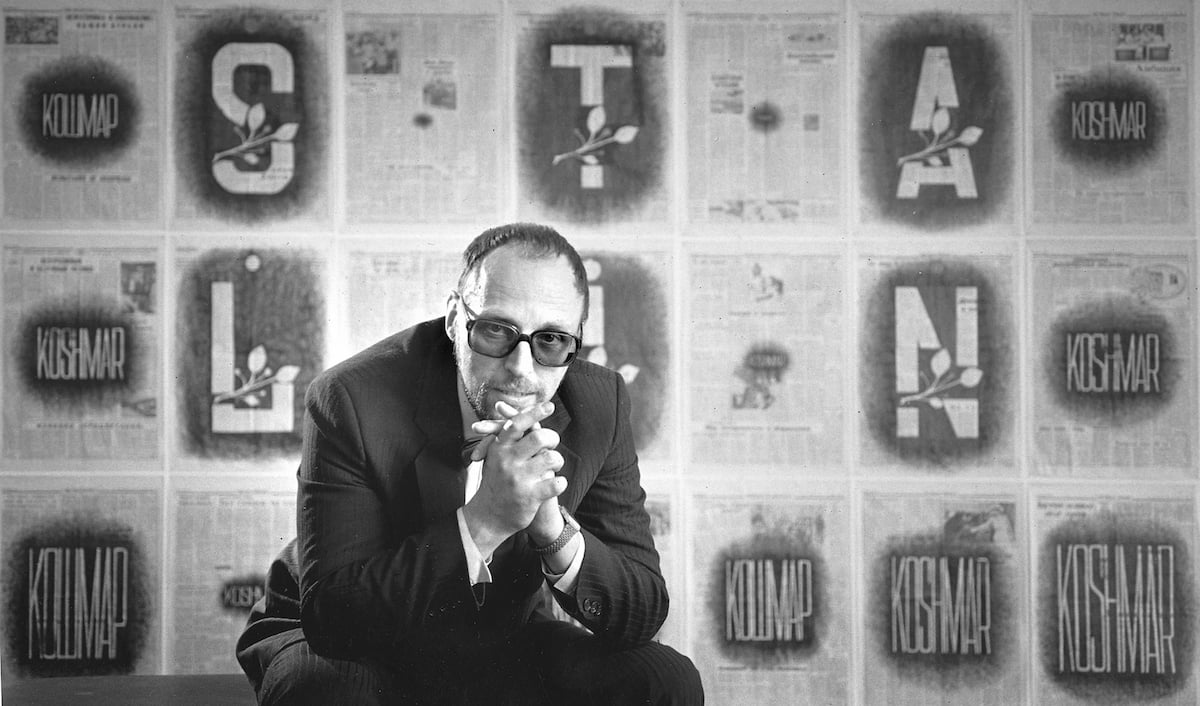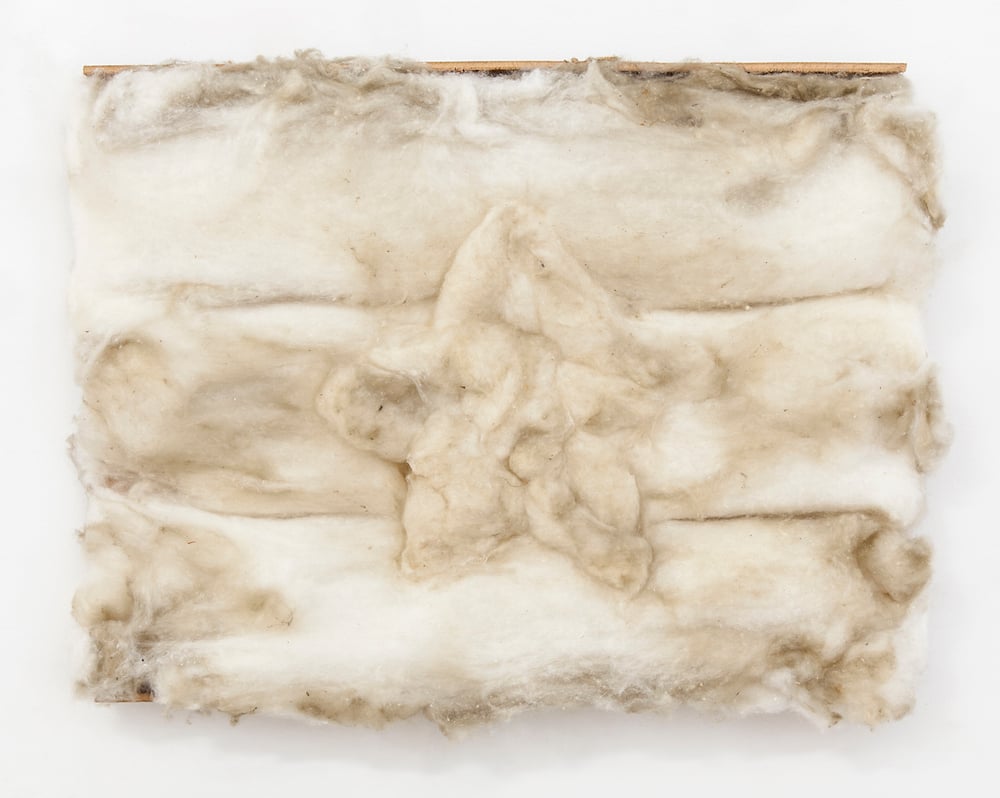Prigov’s phantoms: explore the strange spirituality of the Conceptualist master
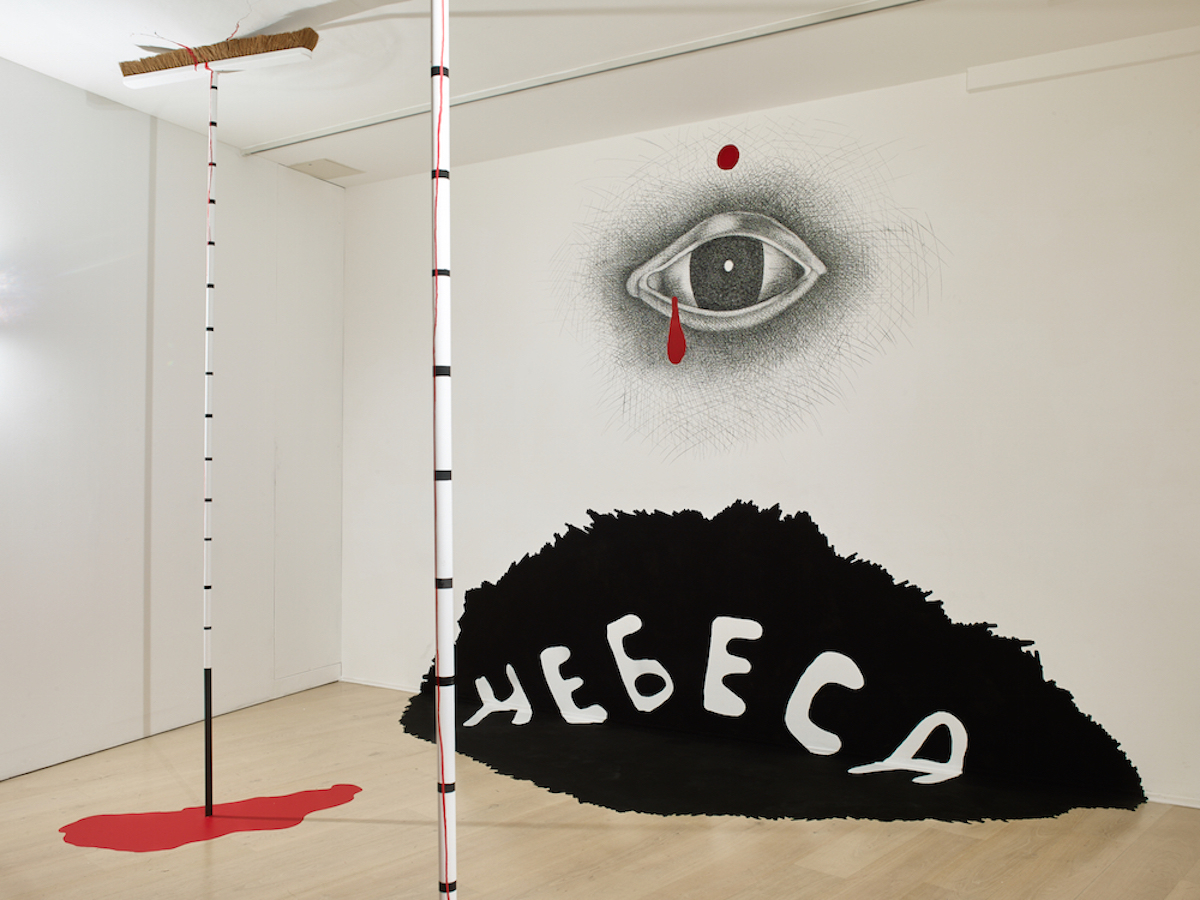
Calvert 22 Foundation’s groundbreaking new show Dmitri Prigov. Theatre of Revolutionary Action allows us to see into the mind of one of Russia’s most puzzling artists. Enter a world of religious imagery, unsettling symbolism and bizarre humour
The Calvert 22 Foundation’s exhibition Dmitri Prigov. Theatre of Revolutionary Action, on display at Calvert 22 Space in London until 17 December, is the first posthumous show in the UK dedicated to an artist who toyed with genre and medium throughout his life. And when it comes to framing Prigov for the public eye, things are complicated by the fact that the artist spent much of his career, particularly in the post-Soviet period, experimenting with the very notion of “installation”.
The centrepiece of Theatre of Revolutionary Action is an installation, from Prigov’s Series with Brooms (2000s). Two brooms stretch from floor to ceiling, where they strain to hold in bulging protrusions dripping with something bright red. Two black marks stain the floor and wall — one embossed with the word “НЕБЕСА” (“HEAVEN”). In the centre is an eye, etched out in thin strokes, itself dripping red. The installation speaks to many of Prigov’s late concerns: a quasi-ironic mysticism; the conflicting tropes of cleanliness and dirt; a world turned upside down; and those ubiquitous, unsettling black marks, speaking of something beyond comprehension.
If the themes raised are typical for Prigov, the Calvert 22 Space installation itself is not, for the simple reason that it exists. Series with Brooms was one of the artist’s “phantom installations”, hundreds of drawings for ensembles never meant to be put together. The exhibition features a number of these sketches: Cleaning Woman and Angels (1990s) is part of a triptych featuring Prigov’s recurring motif, the “Cleaning Woman”, which also features in his large-format drawing on newspaper, She and the Eye (1992), also on display. The work depicts three floating angels and a kneeling cleaning woman, stained with the same red and black, overseen by that same solitary eye.
For Prigov, these “phantom” sketches “reveal an ideal, heavenly world of the existence of angel’s bodies in numerous installations — that is the virtual country with its pure inhabitants.” But this “purity” is complicated by the very fact that these hundreds of installations were not meant to be realised. Where does this preoccupation with the “phantom” come from?
Where Kabakov is domestic, Prigov is spiritual
Prigov cut his teeth as an artist and performer in the non-conformist Moscow Conceptualism movement of the 1970s and 80s, alongside the likes of Erik Bulatov, Ivan Chuikov and Ilya Kabakov. Like its Western counterpart, Soviet Conceptualism was self-reflexive, ironic, fixated on verbal and visual “codes” and their subversion. Installations that exposed both the ideological bankruptcy and the latent spirituality of the “stuff” of everyday life were a vital part of the Conceptualist challenge to artistic norms; not least because they could be set up in private, domestic spaces, away from the disapproving, not-quite-all-seeing eye of the state.
Kabakov is perhaps the Russian artist most associated with installation art, thanks to works such as The Man Who Flew into Space from His Apartment (1981) and Not Everyone Will Be Taken Into the Future (2001), after which another current London exhibition is named; Not Everyone Will Be Taken Into the Future at Tate Modern, explores this side of his and his wife Emilia’s work in stunning fashion. But, as was pointed out in a recent panel between Elizaveta Butakova-Kilgarriff and Katy Wan, curators of Calvert 22 Space and Tate shows respectively, Kabakov and his old friend Prigov approached the question of installation art in strikingly different ways. Kabakov’s installations place an emphasis on the material minutiae of Soviet life — Wan spoke of the difficulties involved in tracking down the exact old Soviet magazines and posters used in The Man Who Flew into Space in order to retain this authentic tangibility; they were intended to be realised.
With his “phantom” works, on the other hand, Prigov played on the disjuncture between conception and actualisation, the idealised internal world of the artist and the inevitable compromise that comes from working in the “real” world. In Butakova-Kilgarriff’s words, where Kabakov is “domestic,” Prigov is “total” or “spiritual.” Rather than concentrating on building physical objects, he produced hundreds and hundreds of his “phantom” sketches, playing with his favourite visual and conceptual tropes, placing them in endless different combinations. Prigov’s concerns are indeed spiritual — the Cleaning Woman, the brooms, the eye, the red and black stains all speak to questions of purity and sin, judgement before God or some other total authority. As Andrei Kovalev has argued, these unrealised installations are “imbued with direct metaphysics” — the Cleaning Woman “bears a metaphorical burden — their task is paradoxically spiritual, to cleanse the world of dirt and filth.” So why confine these profound ideas to the page?
Again, we have to go back to Prigov’s ideological and artistic education in 1970s and 80s Moscow. Like its “Western” counterpart, Russian Conceptualism wanted to break with and break down grand historical narratives — whether these were political or artistic. But in the late Soviet Union, artists were confronted with a very particular set of circumstances: people knew that the grand state narratives governing their lives were in fact a hollow illusion. Mikhail Epstein, a theorist of late Soviet culture, once wrote that, “in the West, conceptualism substitutes “one thing for another” — a real object for its verbal description. But in Russia the object that should be replaced is simply absent.”
Prigov’s phantoms are a way of getting at this absence. The questions posed are real and legitimate, but there is no reliable way of grappling with them. As Kabakov himself said, “this contiguity, closeness, contact with nothing […] is like something that hangs in the air, a self-reliant thing, like a fantastic construction, connected to nothing, with its roots in nothing.”
But this “contact with nothing” is not lightly worn. There is a threat in the emptiness. Series with Brooms, Cleaning Woman and Angels and She and the Eye are all post-Soviet, products of a world where the grand narratives Prigov had ironised in his youth had been totally destroyed. Boris Groys has recently argued that this ideological collapse was what pushed Prigov towards the world of phantoms: “The Soviet Cosmos was a well-defined space with a high visibility and recognisability… the dissolution of the Soviet Union opened this Cosmos to Chaos.” The reduction in Prigov’s colour scheme to black, red and white — one work on display in Theatre of Revolutionary Action declares, “three colours means three basic energies” — went hand in hand with his late fixation on images of spilling and staining, whether ink or sacral blood, and with his religious preoccupations. Red and black take on lives of their own, uncontainable, always on the verge of overwhelming the humble, penitent Cleaning Woman; several drawings in Theatre of Revolutionary Action, including Lenin (1995) and God is Dead (1997), feature cups or glasses ready to overflow onto the white of the paper.
Prigov has long been compared to the medieval figure of the holy fool: a transient, irrational but truthful figure
Does installation art, even in its phantom form, protect against collapse and emptiness? For Groys, Prigov “wanted to be able to address Chaos, to name it, to let it speak… Prigov’s images are haunted by Chaos — but do not manifest it. Chaos conceals itself in dark corners, in abandoned, empty spaces — but then suddenly erupts inside the image, leaving a black stain on it.” The all-seeing eye continues to bleed, the humble brooms of the installation continue to strain against the bulging red ceiling. However, the almost monstrous quality of these images is, Groys argues, almost hopeful: “they demonstrate that one can survive in the dark Chaos beyond any order. These monsters are sacral because they are at the same time inhabitants and inhibitors of the dark forces. That is why similar monsters were revered in medieval churches.”
The medieval church might seem an odd setting for an artist so caught up in the theories and practices of postmodernism. But maybe that’s where Prigov ultimately belongs, in his own ironic, quasi-spiritual way. His hypnotic, almost ritualistic poetry readings — in which he would adopt a voice alternately growling and swooning — and his public interventions, such as Appeal to the Citizens (1985-7) (also featured at Calvert 22 Space), in which he handed out and pinned up naïve little slogans of empathy and harmony — and for which he was incarcerated on a psych ward — have long seen him compared to the medieval figure of the holy fool: a transient, irrational but truthful figure.
here.
The exhibition publication, Dmitri Prigov, is available for £5 from Calvert 22 Bookshop.
